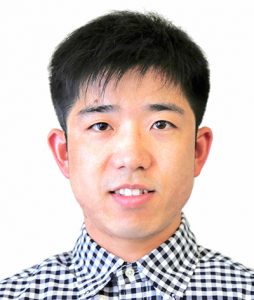June 01, 2020

Name
Wenbin Guo
Hometown
Yuyao, Zhejiang, China
Major
PhD, Industrial and Manufacturing Systems Engineering
Faculty Advisor
Jung Hyup Kim
Where did you complete your undergraduate study?
Bachelor’s degree: Zhejiang Sci-Tech University, Hangzhou, Zhejiang, China; Master’s degree: University of Missouri
Why did you choose Mizzou for your graduate program?
I originally chose to attend the IMSE program at Mizzou because of the beautiful campus environment and cutting-edge equipment in the College of Engineering. During the time I’ve spent there, I’ve been lucky enough to have supportive and dedicated faculty and friendly schoolmates. My education has given me a solid foundation for a career in the academic field. I’m so glad I made the decision to join Mizzou family. Once a Tiger, always a Tiger!
Tell us about your graduate research. What are some potential outcomes or applications?
Engineering education: The purpose of my research is to use metacognitive monitoring feedback to improve student learning performance in an augmented reality (AR) environment. In this study, Microsoft HoloLens, which is the next generation of a see-through holographic computer, was used to provide a more realistic AR environment to engineering students. Also, the near field electromagnetic ranging (NFER) system was used to collect students’ real-time location data when they experienced the AR learning modules. Overall, the outcomes of the study will provide a guideline for how engineers need to develop practical learning content in AR environments. Also, this study will make us understand the impacts and benefits of metacognitive monitoring feedback on student learning in a location-based AR environment.
Health care: The purpose of this study is to investigate the effect of nursing experience on electronic medical record (EMR) documentation time in an intensive care unit (ICU). To assess the nurses’ operation time during the EMR documentation, hierarchical task analysis (HTA) was used to identify the ICU nurse’s EMR workflow patterns. After that, the simulation model was developed by combining the HTA charts and the data for the real-time measurement system (RTMS). The model advanced our understanding of how different nurse experience levels influence the pattern of EMR documentation in ICUs. The findings of this study will help us to identify the areas where the EMR system can be improved by preventing disruptions, incompleteness, inappropriate charting and optimizing the efficiency of the charting process in ICU.
What are some accomplishments you’ve achieved at Mizzou that you’re especially proud of?
2020 Outstanding PhD Student Award
Publications:
- Guo, W., Kim, J. H., Smith, B., & Despins, L. (2019). How Nurse Experience Influences the Patterns of Electronic Medical Record Documentation in an Intensive Care Unit. Proceedings of the Human Factors and Ergonomics Society Annual Meeting, 63(1), 708–712.
- Kim, J. H., Parameshwara, N., Guo, W., & Pasupathy, K. S. (2019). The impact of interrupting nurses on mental workload in emergency departments. International Journal of Human–Computer Interaction, 35(3), 206-217.
- Guo, W. (2018, July). Improving engineering education using augmented reality environment. International Conference on Learning and Collaboration Technologies (pp. 233-242). Springer, Cham.
- Guo, W., Kim, J.H., (2017, July). “Comparing Pointing Performance of Mouse and Eye-gaze Input System”. International Conference on Universal Access in Human-Computer Interaction (pp. 417-429). Springer, Cham.
- Parameshwara, N., Kim, J. H., Guo, W., & Pasupathy, K. S. (2016, December). NGOMSL simulation model in an emergency department. 2016 Winter Simulation Conference (WSC) (pp. 1938-1949). IEEE.
What do you hope to do after you complete your degree?
I hope to be a professor at a university. I prefer to do research related to engineering education and health care. I hope to make contributions to education and help more students succeed.